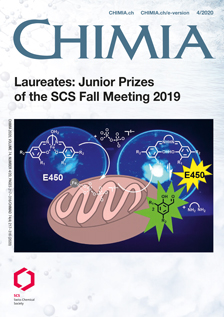Development of In₂O₃-based Catalysts for CO₂-based Methanol Production
DOI:
https://doi.org/10.2533/chimia.2020.257PMID:
32331543Keywords:
Co2 hydrogenation, Green methanol, Heterogeneous catalysis, Indium oxide, PromotionAbstract
CO2 valorization into chemicals and fuels is a key area in current academic and industrial research, with thermocatalytic hydrogenation to methanol comprising one of the most advanced routes. Life-cycle analysis coupled to the framework of planetary boundaries has recently confirmed the sustainability of this process in absolute terms, emphasizing the need for cheaper CO2 and renewable H2 and for a catalytic system embracing high activity, selectivity, and durability to meet economic requirements. Herein, our research efforts aimed to gather atomic-level understanding of electronic and geometric properties of active sites in breakthrough In2O3-based catalytic systems guiding their development are reviewed. In-depth mechanistic elucidations identified limited hydrogen activation ability as well as water-driven sintering as limitations of pure In2O3. The former aspect was successfully addressed by adding through coprecipitation a minimal amount of palladium, forming tiny clusters strongly anchored to the oxide lattice leading to an unprecedented sustained methanol productivity. The use of monoclinic zirconia as a carrier, enabling high In2O3 dispersion in two-dimensional nanostructures, inducing the formation of additional active sites on In2O3, and contributing to CO2 activation, offered an efficient way to further boost activity and tackle In2O3 sintering. Overall, our findings set solid grounds to rationally design a supported and promoted In2O3 catalyst holding bright prospects for use at a large scale.
Downloads
Published
Issue
Section
License
Copyright (c) 2020 Matthias S. Frei, Cecilia Mondelli, Javier Pérez-Ramírez

This work is licensed under a Creative Commons Attribution-NonCommercial 4.0 International License.







